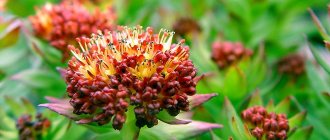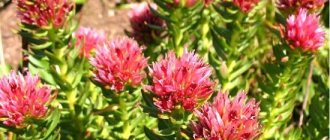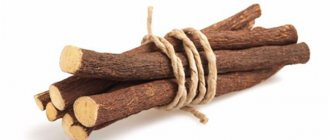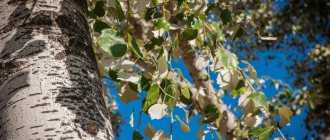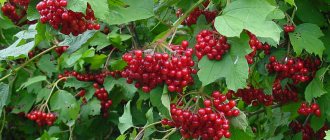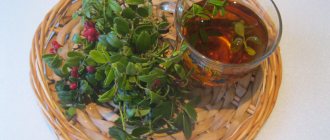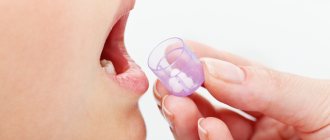Category: Healing products
Taraxacum officinale root contains soluble fiber inulin and various bioactive compounds that have a healing effect on the human body.
For consumption, the rhizome is usually dried and then brewed as a tea. It can also be eaten raw as a vegetable. For medical purposes, capsules with the extract are usually used.
- Beneficial properties of dandelion root
- Diuretic effect of the medicinal plant
- Is it true or false that dandelion rhizome cures diabetes?
- Benefits of plant fiber
- Possible harm to dandelion root: contraindications
- When and how to collect dandelion rhizomes
- How to dry in the oven
- How to dry dandelion roots outdoors
- Drying in a pan
- How to brew tea and coffee from dandelion roots
- What is dandelion root used for in the form of coffee?
- Can the decoction be used to treat skin diseases?
- Dietary supplements with T. officinale rhizome
- How to use the root raw
Beneficial properties of dandelion root
In traditional medicine, the rhizome of T. officinale has been used for hundreds of years. Modern research confirms that the root of the plant demonstrates medicinal effects. But it should be remembered that most of the studies confirming this were carried out either on animals or in vitro. And they were not clinical studies performed in accordance with the standards of evidence-based medicine.
Dandelion root may be beneficial for:
- improving the blood lipid profile (important for preventing atherosclerosis);
- prevention of cancer;
- destroying free radicals and combating chronic inflammation;
- protecting the liver from damage by alcohol;
- protection against pathogenic bacteria that cause food poisoning;
- reducing depression;
- improving the appearance of the skin and protecting it from ultraviolet radiation;
- optimization of digestion.
Diuretic effect of the medicinal plant
The diuretic properties of dandelion are among the best known of all its medicinal properties. It is not for nothing that in France this plant is called pisenlit, which translates as “to wet the bed.”
Some modern studies confirm the presence of diuretic activity in the medicinal plant. Therefore, it is useful in the treatment of hypertension, kidney disease, and weight loss.
But not all researchers agree with these conclusions. Since the biological mechanism responsible for the diuretic effect of dandelion roots has not been identified, it is hypothesized that they do not increase fluid excretion from the body, but simply irritate the bladder, increasing the number of urinations, but not their volume.
Expert opinion
Many doctors and herbal experts speak of dandelion as a true “storehouse of vitamins.” This is understandable, because its chemical composition is unusually rich, and many compounds are in the most acceptable form for the human body.
Experts in the field of dietetics and proper nutrition recommend dandelion remedies for those who have a decreased appetite. They are useful for anorexia. Herbalist and biologist M.V. Gordeev notes that all parts of the dandelion are useful, but most of the valuable micro- and macroelements are concentrated in its root. He advises taking medicines from this root as an adjunct to patients with hepatitis and those who have an enlarged liver or problems with the gallbladder.
Is it true or false that dandelion rhizome cures diabetes?
In folk medicine, the roots of T. officinale are widely used as a treatment for type 2 diabetes.
Indeed, herbal raw materials contain bioactive compounds that have antidiabetic properties. These are sesquiterpene lactones, taraxasterol, taraxerol, chlorogenic acid.
But antidiabetic activity has now been confirmed mainly in test tube experiments, where dandelion extracts block the enzyme alpha-glucosidase, as antidiabetic drugs do.
No clinical trials have been conducted to confirm the presence of such medicinal properties in T.officinale.
Benefits of plant fiber
The product is rich in inulin, one of the healthiest soluble fiber options. Inulin:
- nourishes intestinal microflora;
- helps to lose weight;
- strengthens the immune system;
- fights chronic inflammation.
Inulin is the component of dandelion root that makes it worth taking. But you need to understand that you can get this healing compound either from the raw root, eaten as a vegetable, or from pharmaceutical supplements.
If you brew phyto-raw materials like tea or coffee, the amount of inulin in the drink will be minimal.
Types of drugs in the pharmacy and rules for taking them
Traditionally, dandelion root was roasted and consumed as a drink, and the leaves were used in salads, soups and sandwiches. Today, dandelion is used in a similar way. It is also available in the form of capsules, powders and extracts.
The most convenient form of the drug is a capsule. Most often it is a powder made from dried dandelion root, placed in a gelatin shell. This shell easily dissolves in the stomach and allows the body to quickly absorb nutrients. The biggest advantage in this case is the absence of the bitter and unpleasant taste of dandelion.
For those who for some reason cannot take medicine in capsule form, the pharmacological market produces tablets. They are often supplemented with other medicinal ingredients, such as turmeric, depending on the purpose of the medicine.
An alternative is powder made from crushed dandelion roots. It is most often found in pharmacies. The powder has several uses, including the preparation of tinctures and decoctions. They are eaten up to three times a day. For external use, a paste-like mixture is prepared from the powder by adding water, which is applied to gauze and applied to the damaged area. This compress helps relieve inflammation and pain caused by injury.
It is not recommended to abuse medications containing dandelion root, as they contain a huge amount of active substances.
- For tablets, the standard dose is 2 tablets in the morning and 3 in the evening.
- Capsules are usually taken 2-3 times a day with water.
- As for the decoction, it is recommended to drink half a glass 2-3 times a day immediately before meals.
How to take dandelion root?
The dosage may vary depending on the purpose of use. When purchasing a dandelion root supplement, first read the instructions for use.
Recommended dosages for various forms of dandelion prepared at home:
- fresh leaves: 4-10 g daily;
- fresh roots: 2-8 g daily;
- dried leaves: 4-10 g daily;
- freshly squeezed juice: 1 teaspoon (5 ml) twice a day;
- leaf tincture: 0.4-1 teaspoon (2-5 ml) three times a day.
When and how to collect dandelion rhizomes
The collection of phyto-raw materials should be carried out no closer than 50 meters from a major road (100 meters near megacities). The distance from the city itself should be at least 50 km (preferably at least 100 km from Moscow). Don't forget that dandelion easily adsorbs pesticides and heavy metals.
The best time to collect is autumn. At this time, the roots have the most inulin.
- We dig up the roots and clear them from the soil. We throw away very small and damaged roots.
- Rinse thoroughly. Preferably under running water.
- Place on parchment paper or a paper towel and let dry overnight.
- Herbal raw materials are dried in three main ways: in the air, in the oven, in a frying pan.
How to dry in the oven
If you don’t want to cut the dandelion roots into small pieces, you can place them entirely on a baking sheet lined with parchment paper and place them in the oven, preheated to 150 degrees.
During the drying process, raw materials cannot be left unattended for a long time - they will burn. The roots are ready the moment they begin to break easily in your hands. Up to this point, they had bent, not broken.
After the roots have dried, they will still have to be chopped before brewing. Therefore, they are usually cut in advance. As a rule, in circles. And also place them in the oven at 150 degrees and make sure they don’t overcook.
Drying in a pan
The roots, cut into circles or very small pieces, are fried in a frying pan.
Pour the herbal raw materials into a dry frying pan with a thick bottom and put on fire. Fry, stirring constantly. You should not ensure that the roots are fried. They should simply lose excess moisture.
This method is suitable for those whose oven quickly heats up to high temperatures without holding 150 degrees.
The dried roots are poured into glass jars or paper bags and stored in a dry, dark place.
How to brew tea and coffee from dandelion roots
This drink is called tea, decoction, and coffee. There is no standardized cooking recipe.
- Usually, before brewing, the dried roots are ground in a coffee grinder.
- The resulting powder is poured with water. Take 1-2 tablespoons of phyto-raw materials per 250 ml cup.
- Place on the fire and brew like natural coffee until it boils.
- Then filter and drink hot. If desired, add cream, honey, and spices. Everything is the same as with regular coffee or tea.
If it is not possible to grind the roots to the state of coffee brewing, they can be cut into small pieces and filled with water. Put on the fire and cook not until it boils, but longer - 5-10 minutes.
They drink this decoction in the same way as dandelion “coffee” - filter it, add honey, cream, and spices if desired.
Recommended amount for daily consumption is 1-2 cups.
Dandelion for pancreatitis
Dandelion root for pancreatitis normalizes the functioning of the pancreas.
Ingredients :
- Dandelion root (chopped) - 50 g.
- Water - 200 ml.
How to cook: Pour the chopped root into an enamel pan, add water, cover and boil for 10 minutes. Remove the pan from the heat, cover with a towel and leave for 10 minutes, then strain.
How to use: Drink the decoction 3-4 times a day, ¼-½ cup.
Result: Dandelion root improves the secretion of gastric juice and bile secretion, normalizes fat metabolism and lowers blood sugar levels.
What is dandelion root used for in the form of coffee?
The rhizomes of Taraxacum officinale have medicinal properties. However, one must understand that these properties are not so pronounced that serious diseases, for example, oncology, can be cured with the help of “coffee”.
Therefore, dandelion tea-coffee is used as a substitute for chicory drink, to which it is similar in taste and biological characteristics.
Usually this is a caffeine-free morning tonic drink that helps normalize metabolism and protect against negative environmental factors.
Collection
Collection is not particularly difficult. The rhizome is dug up after the end of the growing season - from September to October. However, it is permissible to harvest in April, after the leaves appear. If you choose the wrong time, the raw material will be dark, flabby and unsuitable for consumption. Fresh roots are thoroughly cleaned of soil and split lengthwise. You can dry them on a wire or in an oven at a temperature of no more than 40 degrees. Under good conditions, the medicine can be stored without loss of valuable qualities for up to five years.
It is prohibited to collect the plant on lawns, recreational and pet areas, near businesses and along highways. The root has the ability to accumulate harmful substances and absorbs them well from the environment. Collection near fields and pastures is also not recommended, since the land may be fertilized with minerals.
Can the decoction be used to treat skin diseases?
In folk medicine, a decoction of the roots (tea, “coffee”) is used to treat acne, eczema, psoriasis, boils, treating the affected areas of the skin with it.
Although the decoction has anti-inflammatory properties that may be useful in treating dermatological diseases, experts do not recommend using it in this way.
Since with prolonged contact with the skin, the decoction can cause contact dermatitis and this review will only worsen the condition.
Application
The scope of application is quite wide. Drinking products are made from it. Cocoa is made from ground powder. In culinary blogs and themed fashionable restaurants, they recommend it in the form of spices to give a unique aroma.
In the beauty industry, the contents are introduced into phyto-masks, lotions for the face and hair. It was recognized by both official and folk medicine. It is better to look for preparations and a variety of probiotics in specialized kiosks and online health food stores.
Dandelion root in folk medicine
Traditional healers respect this plant and stock it to prevent difficult-to-treat illnesses. They have been carefully preserved since ancient times. It has become widespread in the treatment of patients with liver dysfunction in collaboration with healing herbs:
- A unique combination is obtained with rhubarb root. Sometimes add a handful of hawthorn umbrellas, 1 tbsp. pour boiling water over the spoon, leave for a short period and use a third of a measuring cup.
- Take dandelion root, mint, and yellow milkweed in identical volumetric flasks. The workpiece is filled with water and heated over steam. To do this, pour water into a saucer or saucepan and place it on the fire. The “life-giving elixir” is placed on top of this container, according to the principle of a double boiler. They drink according to a predetermined schedule.
- A good therapeutic effect is achieved when mixed with chicory root. The workpiece is poured with a glass of liquid and slightly heated by steam. After cooling, take half a glass before bed.
There are other popular methods of resisting adversity:
- In case of inflammation of the tendons, one spoonful of rhizome is filled with liquid, heated over low heat and infused. Drink before the main meal.
- To reduce cholesterol levels, granules are eaten in a dried version and at the same time provide plenty of fluids.
- For colds and viruses, brew one tsp. a mug of boiling water, leave for an hour, covering the top with a lid or towel, and drink a quarter glass 3-4 times a day.
- For ulcers and burns, prepare oil: two tablespoons. powder is poured with half a glass of any available unrefined oil and left for about a day.
- For tuberculosis it is used as an additional remedy. 1.5 tbsp. the mixture is poured into a glass of water, heated for 15-20 minutes for steam, strained and drunk three times a day, 1.5 glasses.
- For eczema, combine dandelion root and honey in equal parts. Compresses are applied to the surface once.
- To relieve aching toothache, rinse the mouth with a decoction. It soothes, has an analgesic effect and eliminates gum abscesses.
Dietary supplements with T. officinale rhizome
Today, supplements containing Taraxacum officinale root extracts are available on the pharmaceutical market.
The amount of extract in such dietary supplements is 500-1500 mg. The manufacturer's recommended daily dosage is 1000-2000 mg.
It will not be possible to make a tonic drink from such additives. But they contain much more healing inulin than tea. Since during the production of dietary supplements, only water is removed from the roots. All medicinal compounds remain intact. And when we brew “coffee,” we strain it and deprive ourselves of the bulk of plant fiber.
Supplements with dandelion rhizomes are considered general strengthening agents. And they do not have clear indications for use.
An alcohol tincture can be made from phyto-raw materials.
However, experts in the field of traditional medicine do not recommend using the product in this way, since alcohol reduces the biological activity of medicinal plants.
Side effects and contraindications
Dandelion root also has contraindications. Some people have a congenital intolerance. Therefore, it must be used with extreme caution. The first time it is necessary to test the body's reaction: the dosage should be three times less.
Allergic reactions are rare manifestations. Significant restrictions on use occur in the presence of ulcers, gastritis and congestion in the biliary tract. In this case, it is important to choose the right dosage and seek help from a herbalist. If used incorrectly, vomiting and diarrhea may occur. In other cases, the medicine only brings benefits. It can be taken even during lactation and postpartum depression.
Absolutely anyone can prepare a valuable medicinal plant. To maintain your health for many years, you don’t have to buy expensive products. Due to its unique medicinal properties, dandelion root is popularly called “Russian ginseng”. However, do not ignore the fact that, like other herbs, it may have significant limitations. Therefore, before use, it is advisable to study in detail the available materials on this issue and consult with an experienced doctor.
